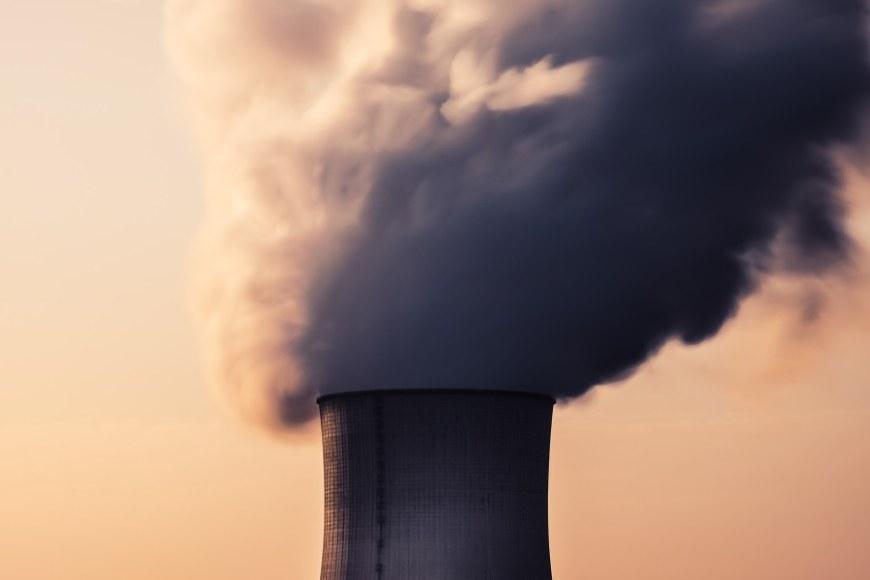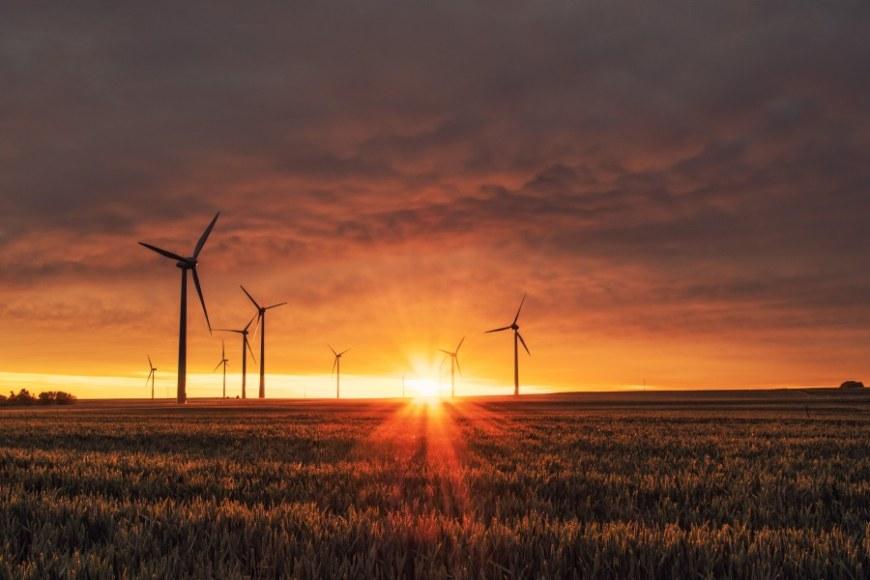Who is responsible for tackling climate change? You, me, politicians or energy producers?

This article was originally published in Unit, the magazine of Tampere Universities.
Since the pre-industrial era, the average global temperature has risen by one degree. If and when the temperature continues to rise by another half a degree, we will increasingly face extreme weather conditions, such as storms, heatwaves and droughts. Food production will suffer, health problems will increase and the habitat of many species will be decimated. Melting glaciers, rising sea levels and the extinction of pollinators will reshape our planet.
If we want to prevent at least some of these changes, action must be taken in all areas of life over the next two decades. The responsibility for tackling climate change lies with decision-makers, industry, and ordinary citizens.
However, the problem has been that so far, no agreement has been reached on who should act and how. Citizens are told to recycle, reduce flying and favour public transport. At the same time, the non-reusable clothing industry produces massive emissions, air and shipping companies are using fossil fuels without regulation, and various world leaders are stating that they will not comply with some of the climate agreements that have already been signed.
Lack of leadership
In the 1980s, ozone depletion caused the same sort of global concern as climate change does today. However, both the political will and technical solutions were quickly found to solve this serious environmental problem. The Montreal Protocol, signed in 1987 and ratified by every country in the world, drastically reduced the use of ozone-depleting substances.
“The current climate policy has not been as successful. There are no easy technological solutions, and today’s political leadership on this issue is not same as the leadership in the 1980s,” says Pekka Jokinen, professor of environmental policy at Tampere University.
The lack of collective decision-making and, eg the United States’ varying policies have mainly created uncertainty in the fight against climate change. The EU has sought to assume the role of world leader on climate issues, but in Jokinen’s view, the internally fragmented Union has not been particularly successful in meeting its aspirations.

Free-riders cause huge risks
The world’s top five carbon dioxide emitters are China, the EU countries, India, Russia and the United States. When looking at emissions per citizen, by far the highest per capita emissions are found in the Middle Eastern oil-producing countries and Western countries such as Finland, and this means that Finns must also make changes.
“There are still people who are saying that Finland is such a small country that our actions do not matter. If all the EU countries thought the same, the results would be intolerable. It is impossible to think that China would be the first to make sustainable climate solutions and that we should follow,” Jokinen points out.
In order to stop climate change, humankind – under the leadership of the emitter countries mentioned above – should swiftly move to renewable energy, improve energy efficiency, switch to electronic transport, exchange steaks and cheese for plant-based foods, and increase negative emissions, eg by planting forests. According to the Intergovernmental Panel on Climate Change (IPCC), these changes require favourable economic conditions, such as the ability to mobilise investments, but also public awareness and political support.
“Combating climate change requires responsible policy-making in the long term. There are enormous risks if more free-riders emerge and the significance of scientific discoveries is not understood in decision-making,” says Pami Aalto, Jean Monnet Professor at Tampere University and Consortium Leader of the Transition to a Resource Effective and Climate Neutral Electric Energy System (ELTRAN).
The free-riders Aalto refers to include the leadership of the United States and the populist political movements that have recently gained ground in Europe.
A diverse range of energy sources needed
If the aim is to limit the rise of the global temperature to 1.5 degrees above the pre-industrial level, the world needs to switch from coal, oil and natural gas to low- or zero-emission energy. In practice, this currently means water, wind and solar energy, as well as some low-emission nuclear energy.
“The energy package of the future is diverse. In addition, if we have weather-dependent forms of production, we will also need either regulatory power, a cost-effective way of storing energy or significant demand flexibility and flexible loads,” says Aki Korpela, Principal Lecturer of electrical engineering at Tampere University of Applied Sciences (TAMK).
Demand flexibility means, eg transferring energy consumption to night time or another time. Sometimes even heating the household boiler half an hour later would suffice.
Small, heat-recovering nuclear power plants or bio-power plants – whose CO2 emissions are significantly smaller than those of coal-based plants – could be harnessed as sources of regulatory power. The same applies to the batteries of electric vehicles. A cost-effective way of storing solar energy is still needed, but solar energy is already an efficient and economical solution for industrial production, as energy consumption is steady throughout the year. In residential buildings, solar power and battery storage in electric vehicles (EV) present an attractive combination that decreases the costs of EV maintenance.
“The wind and the sun have not been seen as alternatives in the past, but enormous supplies of such energy are available almost everywhere in the world. If 3% of the area of the United States was harnessed for the production of wind and solar energy, 80% of the energy the country produces would be renewable,” Aalto says.

Renewables already affordable
Despite the stance of President Donald Trump, many US states have started to use wind and solar energy because they are affordable. Aalto points out that here in Finland, new wind power projects already operate on market terms and no longer need public subsidy.
However, changes in global energy production are happening agonisingly slowly.
“We are going to waste another decade or two because it is hard to steer such a large vessel in a new direction. In dozens of countries, people have been kept happy by supporting the use of fossil fuels with tax concessions. This is a huge problem and the changes in the energy system will not move forward without political intervention,” Aalto points out.
Polluting technology and fuels can be forced out of the market, eg through direct bans or taxation, and by focusing on emission-free technology in public procurement.
“Command-and-control measures would perhaps work better if they were tied to incentives that support less polluting options with tax breaks or bonus-malus systems where more polluting technologies pay a penalty and less polluting ones receive a tax break. Governments and parliaments play a key role, followed by the authorities that deal with technology,” says Aalto.
Low-income countries solving problems
A vital question is what kind of energy production is introduced in the low-income countries where populations are growing and becoming more middle class. Finland has already invested in development cooperation that enables the introduction of wind and solar energy in such countries.
“It is clear that the same historical development paths followed in the West cannot be copied by low-income countries, where it is vital to bypass the use of fossil fuels. But how does this happen?” Jokinen asks, and he admits that it is hard to imagine such a change.
Nuclear fusion energy is expected to solve the emission problems of energy production in the future. Fusion energy production has already succeeded, but not so effectively that it could produce more energy than is used in its production. In spite of major investments, this solution may not arrive for another 50 years. Those who look to fusion energy as the answer to climate change will be disappointed – as things stand, fusion energy will not arrive soon enough to save the climate.
Consumption is the other side of the equation
So long as alternative energy production is still developing, emissions could be reduced by reducing energy consumption. However, because declining sales are not in the interests of energy producers, it is unlikely that political decision-makers will promote the regulation of energy consumption.
“The more energy is produced and the more there are temporary shortages that raise energy prices, the better it is for energy producers. However, this does not serve the economic interests of industrial production or consumers. Nevertheless, politicians must listen to both sides, because there are many industrial jobs and energy-producing and consuming units,” Aalto points out.
He does not believe that regulation would solve the problem. Instead, expanding the markets of flexible energy, which would make both energy prices and consumption more flexible, could be the answer.
Consumers also play a role. People may easily reduce their energy consumption by lowering the temperature in their homes and cutting down on electricity use and other consumption. For example, about 15 million mail packages are annually sent to Finland from China (Helsingin Sanomat, 3 March 2019). These online purchases annually generate a considerable amount of industrial production and transport emissions.
Individuals also have the power to accelerate greater structural change. Eco-friendly electricity contracts and the replacement of natural gas or oil heating with heat pumps are direct messages to energy producers. For several years, the Finnish government has encouraged the purchase of heat pumps by offering tax concessions on home renovations.
Coal-operated companies will lose out
In industrial production, strong signals are needed to reduce emissions.
“Companies will continue to use their existing fixed assets for as long as possible. However, coal-based companies will lose out and only the metal industry will still need coal,” Aalto says.
Aalto has also noticed that large-scale changes usually require public measures. When the public sector makes advances, industrial production follows. He praises the federal-level research programmes of Germany and the United States, which have yielded climate-friendly results.
“In Germany, government investments in RDI have contributed to the country’s strong solar and wind power sector,” Aalto notes.
Electric cars’ batteries have a long lifespan
In the Western countries, transport is the greatest producer of CO2 emissions, and these emissions continue to grow. In the future, it is imperative that ever more electric cars replace conventional cars and conventional fuels are replaced by biofuels.

Electric cars’ batteries have a long lifespan
In the Western countries, transport is the greatest producer of CO2 emissions, and these emissions continue to grow. In the future, it is imperative that ever more electric cars replace conventional cars and conventional fuels are replaced by biofuels.
Jukka Pellinen, who works in electronic traffic development at TAMK, believes that biofuels are the most climate-friendly option for heavy vehicles and long-distance travel. Heikki Liimatainen, a member of the Finnish Climate Panel and Director of the Transport Research Centre Verne at Tampere University, also believes that synthetic fuels could replace petrol. Indeed, synthetic fuels could be produced by taking carbon dioxide from the air.
As long as the average driving range of a car is about 50 kilometres, electricity is by far the best source of energy. In cities, electricity also works well in powering trucks.
“Electric car batteries are rapidly developing and the total emissions from batteries decrease if they are properly handled from production to recycling,” Pellinen says.
Batteries have a long lifespan. After intense use in vehicles, they may still be used for years, eg to store energy in solar power plants, after which they can be recycled.
The motor industry seems to have a good handle on the development of electric cars, and new players have quickly emerged in the field. However, car prices are still beyond the reach of most consumers, and only political decisions can influence how many people can buy an electric car in the near future.
“The government support for the purchase of electric cars is quite low in Finland, approximately €2,000. It could be higher,” Liimatainen says.
In addition to purchase subsidies, an emissions-based car tax could also be used. In Finland, the car tax percentage significantly increases only after the emissions exceed 100 grams per kilometre. Thus, the amount of money people may have to spend on car tax for an electric vehicle can be more than that of a small car running on petrol. According to Liimatainen, the tax could increase in a linear fashion so that a zero-emission car would have a tax rate of 2% and each gram of emission would raise the tax by, eg 0.2%.
Road tolls in cities?
In addition to taxation, climate-friendly traffic systems should also be developed.
“It requires political will to build societies where urban mobility is based on public transport, walking and cycling. Investments should especially be made in rail transport because it is a faster and more comfortable mode of travelling, and therefore more attractive than the other options. It might be possible to raise the state support for rail traffic in Finland,” Liimatainen says.
Political will is required from decision-makers at both the local and national levels. Decisions on urban traffic are made locally, but the government could encourage investments in public transport and cycling by participating in the costs. At present, the Finnish government contributes only about 30% of the costs of railway construction. Furthermore, there is only limited investment support for cycling. In this respect, Finland could learn lessons from abroad.
“In the 1970s, the Dutch government started to contribute as much as 70% of the costs of building cycling lanes, which has made the Netherlands the best country in the world for cycling,” Liimatainen notes.
Everyday traffic choices depend on personal incomes and traffic costs. It is easy to choose public transport if it serves a person’s needs at the right price. According to Liimatainen, before the introduction of low-emission and emission-free cars, motoring could be restricted in cities by toll payments and congestion charges. The revenue from such fees should be used to develop public transport and feeder parking.
“The purpose of the charges is not to restrict people’s mobility, but rather to promote it, because such charges would reduce congestion and make traffic smoother,” Liimatainen says.
He also points out that the charges would further enhance urban environments by reducing noise and improving air quality.
Political pressure is needed on international transport
International aviation and shipping are major transport problems that require global solutions, since emissions from these sources are currently not included in national emissions quotas. Emissions from international shipping to Finnish ports alone are annually higher than the emissions from passenger traffic for the entire country.
It is naturally not in the shipping companies’ interest to reduce traffic. However, technological solutions to save fuel reduce overall costs and are thus also desirable from the business perspective. Emissions-free sea traffic saw a ground-breaking development last year as passenger ferries from Helsingborg in Sweden to Helsingør in Denmark started to run on electric batteries that are charged with renewable energy when the ships are docked.
Aalto believes that technological solutions are increasingly likely, but they require political pressure. For example, the International Air Transport Association (IATA) has started self-regulation, although airlines also need incentives from the countries in which they are based.
“It is not enough for the industry to think that it might need to do something at some point. Reducing emissions requires political pressure from export-intensive countries,” Aalto says.
Meanwhile, people can save on emissions by reducing flying – especially long-haul flights and stopovers – and by favouring domestic or local products, which reduces the need for long-distance transportation.

Will technology provide the solution?
The often-repeated solution to emissions and climate issues is technology and innovation. It is of course true that new technology is needed to reduce emissions. According to Liimatainen, the efficiency of technology should be further improved and new methods introduced.
“One of the technologies contributing to the transformation of energy in more than one sector is ‘power-to-x’, ie the conversion of surplus electricity produced from renewable energy sources for other purposes, such as hydrogen, and its use in fuel cells. That could be a method of building up energy reserves,” Liimatainen says.
Mika Nieminen, Head of the Degree Programme in Environmental Engineering at TAMK, mentions intelligent systems, which can be used in the future to regulate small energy systems, such as single bio-gas plants. The best innovations reduce both emissions and costs. Introducing such technology is also profitable to industry.
Nieminen wants to believe in the ability of people to come up with solutions. However, he asks whether it is sensible to digitalise and virtualise everything. Could the problems not be resolved with less technology?
“According to the laws of physics, energy that is never used is the most effective because energy is always lost in production and transmission,” Nieminen points out.
He is pleased that the circular economy has shed light on the whole cycle of the economy and ecosystem services, which nature offers us at an affordable price, if not for free.
“If we lose pollinators because of climate change, we will also lose a large part of our crops. There are places in the world where fruit trees are already pollinated by hand, but if there were still pollinators, this job would be done for free. Money talks, so we should also be able to calculate the price of natural ecosystem services,” Nieminen says.
In the classic study “The value of the world’s ecosystem services and natural capital”, the estimated annual value of ecosystem services was calculated to be around $33 trillion. The economic significance of the services is well illustrated by the fact that at the time of the study’s publication in the 1990s, the annual GDP of the entire world was $18 trillion.
If these services are lost due to climate change, the impact will be staggering.
Sources and further reading:
- The Climate Guide of the Finnish Meteorological Institute and Finland's Environment Institute
- IPCC: Summary for policymakers
- IPCC: Frequently asked questions
- UN Emissions Gap Report 2018
- The World Bank: CO2 emissions (metric tons per capita)
- Nature: The value of the world’s ecosystem services and natural capital
Author: Sabina Mäki








